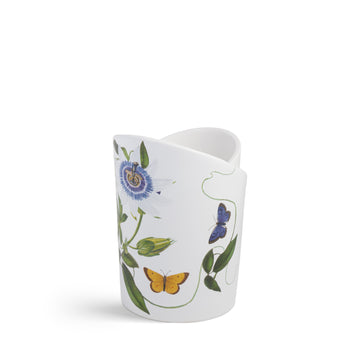Aboca Museum enriches its collection of items inspired by the marvellous tables of Erucarum ortus, alimentum et paradoxa metamorphosis with a refined folder. It is already a classic...
The originals of the plate reproduced in the folder, Cyclamen flore purpureo, can be found in the Aboca Museum’s Bibliotheca Antiqua.While copies of the work normally contain black and white engravings, Aboca’s specimens stand out for their delicate use of contemporary watercolour.
The history of botany and the spotlighting of its rarest and most precious aspects has always been a part of Aboca’s mission.Erucarum ortus, alimentum et paradoxa metamorphosis, which was printed in Amsterdam in the 1720s, contains one of the best-known studies of botany and entomology of the Age of Enlightenment.It owes its fame to the extraordinary artwork of Maria Sybilla Merian, a gifted painter and intrepid naturalist who overturned the conventions of the rigidly male world of the Dutch scientific community. Her conviction that every species should be painted in its natural environment led her to undertake an adventurous expedition to the forests of Suriname, to see for herself the metamorphosis of the caterpillars that populated the area.
Aboca Museum enriches its collection of items inspired by the marvellous tables of Erucarum ortus, alimentum et paradoxa metamorphosis with a refined folder. It is already a classic...
The originals of the plate reproduced in the folder, Cyclamen flore purpureo, can be found in the Aboca Museum’s Bibliotheca Antiqua.While copies of the work normally contain black and white engravings, Aboca’s specimens stand out for their delicate use of contemporary watercolour.
The history of botany and the spotlighting of its rarest and most precious aspects has always been a part of Aboca’s mission.Erucarum ortus, alimentum et paradoxa metamorphosis, which was printed in Amsterdam in the 1720s, contains one of the best-known studies of botany and entomology of the Age of Enlightenment.It owes its fame to the extraordinary artwork of Maria Sybilla Merian, a gifted painter and intrepid naturalist who overturned the conventions of the rigidly male world of the Dutch scientific community. Her conviction that every species should be painted in its natural environment led her to undertake an adventurous expedition to the forests of Suriname, to see for herself the metamorphosis of the caterpillars that populated the area.
















